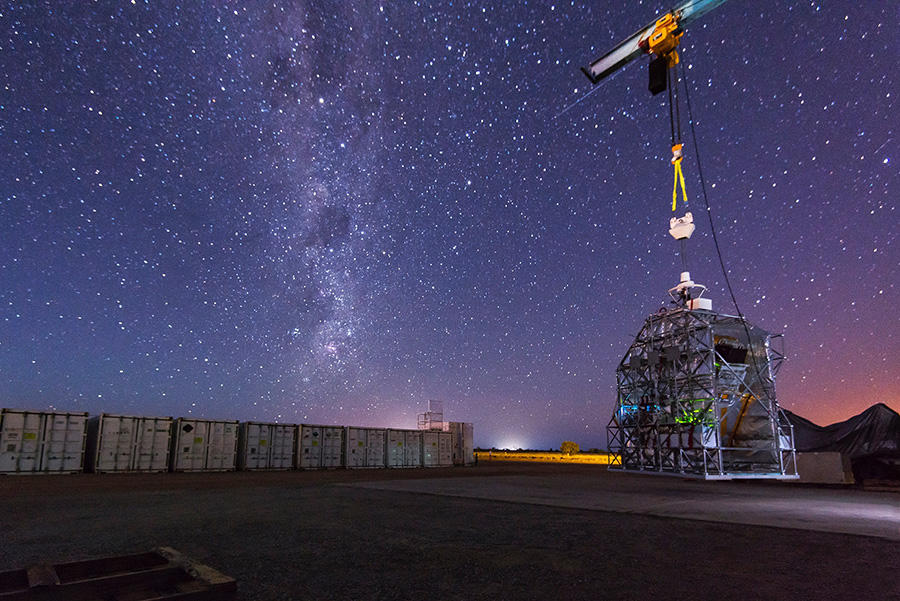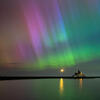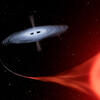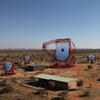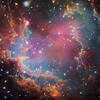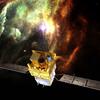You are here
Using Balloons to Observe the Universe
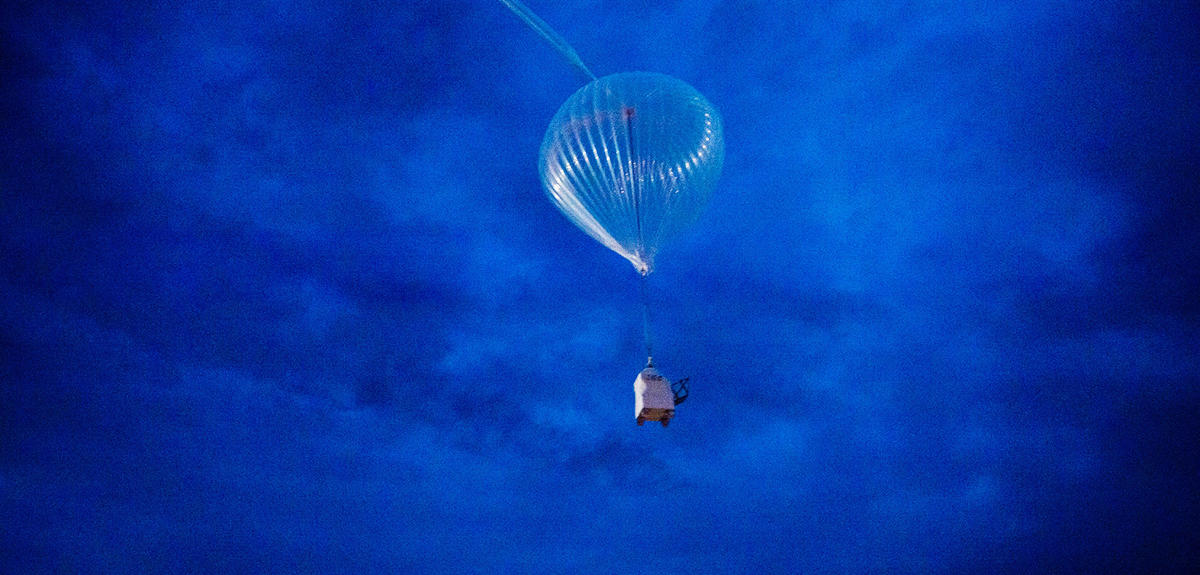
With some of the advantages of satellites, stratospheric balloons are considerably cheaper, and can be used to test tomorrow's space technologies in virtually real conditions. 56 years after the first flight over France, from a site near Trappes (Paris region) in October 1961, these balloons continue to play a key role in scientific research, especially in France, one of the countries most involved in their use. The year 2017 alone will have seen three campaigns with strong French participation, in Australia, New Zealand and the US.
Near-space conditions
"Several disciplines would find it difficult to do without this simple way of temporarily locating instruments at altitudes ranging from 20 to 40 kilometers, unattainable by aircraft," explains Martin Giard, deputy scientific director in charge of space affairs at the CNRS National Institute for Earth Sciences and Astronomy.
Without balloons, atmospheric scientists would be unable to take in situ measurements of various stratospheric phenomena related to pollution, the climate, the weather, etc, while astrophysicists would no longer have access to an environment that is ideal for observing the cosmos in near-space conditions. The Earth’s atmosphere blocks out part of the electromagnetic radiation from space, preventing ground-based telescopes from observing the sky at certain wavelengths.
Placing detectors at high altitude in an environment where the air is extremely thin thus provides scientists with a valuable means of obtaining images in these missing parts of the electromagnetic spectrum. It is far cheaper and easier to launch a balloon than a satellite, and the instruments it carries in its gondola can frequently be recovered. As a result, this method can be used to perform full-scale trials of devices that will later be placed in orbit, since a space mission makes it possible to gather data over longer periods of time.
Studying interstellar dust
After an initial balloon flight in Canada in September 2015, the PILOT campaign, whose second flight ended on 17 April 2017 several hundred kilometers from Alice Springs in central Australia, illustrates these advantages perfectly. Designed by the Research Institute in Astrophysics and Planetology (IRAP),1 the IAS,2 the French Alternative Energies and Atomic Energy Commission (CEA), and the CNES,3 the experimental instrument comprises a telescope whose detector is composed of an array of 2,048 bolometers4 cooled to a temperature of 300 millikelvins. "Its purpose is to measure, in certain parts of the southern sky, a phenomenon known as 'polarized emission from interstellar dust'," explains François Boulanger, senior researcher at the IAS in Orsay. Detecting this signal, which is located in the far-infrared, is impossible from the ground, at the wavelengths where it is strongest. And yet this is one of the few ways in which astrophysicists can map the magnetic field in the Milky Way's interstellar clouds, and thus study the role it plays in star formation. This is also of interest to cosmologists, insofar as the light emission of galactic origin is superimposed on the cosmic microwave background, making it harder to find the much- awaited primordial gravitational waves that may provide conclusive evidence for the inflation theory.

An 800,000 m3 giant filled with helium
After a month and a half preparing the balloon and waiting for the stratospheric winds to reverse direction, PILOT was launched on April 16, 2017 at 5:30am. Carried aloft by the CNES's largest open stratospheric balloon, an 800,000 m3 giant filled with helium and able to reach a diameter of 150 meters, the one-ton pointed gondola transporting the experimental instruments rapidly rose to an altitude of over 40 kilometers. It enabled the team to collect data for 33 hours and 40 minutes before it began its descent, making a gentle landing in an inhospitable desert region several hundreds of kilometers from the launch site. It was recovered the next day, completely intact, by helicopter.
Fully satisfied with the outcome of their Australian venture, the PILOT team are planning a third flight, which could launch from a base near Kiruna, Sweden, in 2018. They have also tabled a proposal for the development of a new balloon-borne telescope dubbed 'B-SIDE'. "This type of experiment—whose main benefit is that it enables us to search the sky for polarized emission at wavelengths that have never been used before—is both cheap and rapid to develop," explains Jean-Philippe Bernard, Principal Investigator for PILOT and senior researcher at the IRAP.
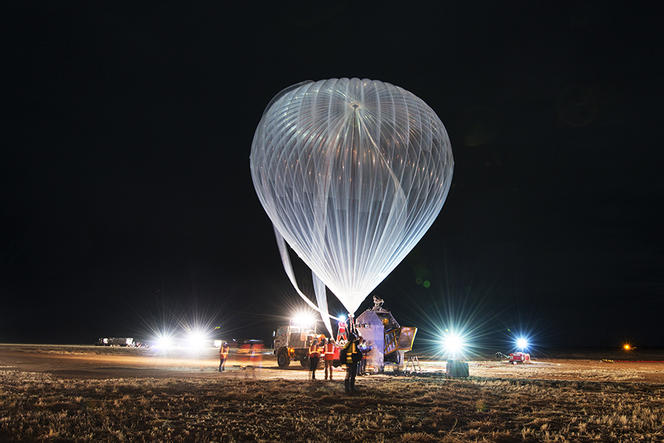


Detecting cosmic rays
The PILOT researchers are not the only ones to swear by stratospheric balloons. On April 25, 2017 at 10:30am, just a few days after the Australian flight, a US super pressure balloon of 532,000 m3 was launched from Wanaka airport, New Zealand, as part of the EUSO-SPB international experimental project, in which France is taking part,5 aimed at detecting ultra-high energy cosmic rays. It is due to carry a 2495-kilogram payload for a period of a hundred days.
In addition, September 2017 will see the first 'FIREBall 2' campaign get underway at Fort Sumner in New Mexico (US). Led by CalTech, Columbia University and the LAM,6 with the CNES in charge of developing the pointed gondola, the project aims to study gas exchange between the intergalactic medium and galaxies. Flows of gas entering galaxies provide the raw material required for star formation. But gas can also be ejected from galaxies before returning there, in some cases.



The purpose of FIREBall 2 is to "characterize this cycle and its connections with star formation," explains Bruno Milliard, from the LAM. Since ground-based observation of intergalactic gas in the ultraviolet is impossible, the team has designed a multi-object spectrograph that can operate from one of NASA's million-cubic meter stratospheric balloons. During the eight-hour flight, they are hoping to obtain images of more than 200 galaxies, yet again demonstrating the irreplaceable role of balloons in cutting-edge scientific research aimed at shedding fresh light on our Universe.
- 1. CNRS / Université de Toulouse III Paul Sabatier.
- 2. Institut d’Astrophysique Spatiale (CNRS / Université Paris-Sud 11).
- 3. Centre National d’Etudes Spatiales, the French National Space Agency.
- 4. A bolometer is a device that detects and measures electromagnetic radiation by the heat that this induces.
- 5. French organizations taking part in the project: IRAP; Laboratoire Astroparticule et Cosmologie (CNRS / CEA / Université Paris-Diderot / Observatoire de Paris); Laboratoire de l’Accélérateur Linéaire (CNRS / Université Paris-Sud); CNES (supplier of the pointed gondola).
- 6. Laboratoire d’Astrophysique de Marseille (CNRS / Aix-Marseille Université).


